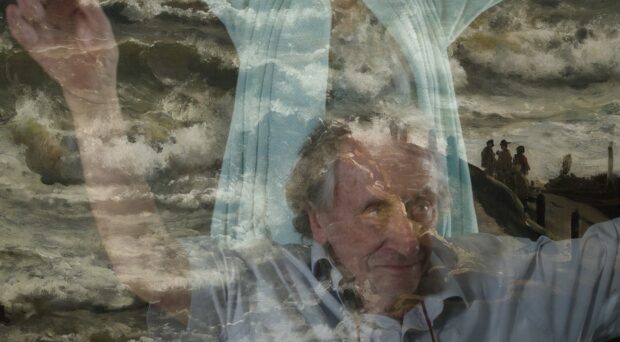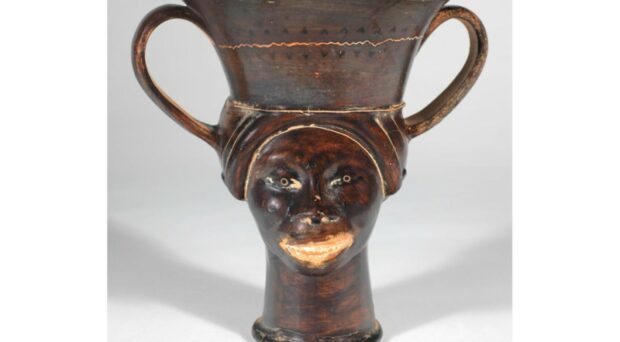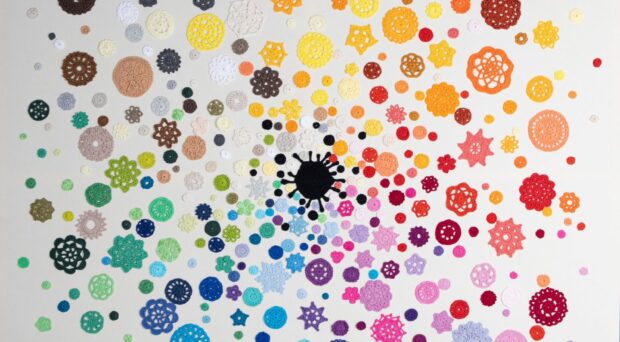What is supposed to happen to all the stuff that archaeologists dig up? And what do we do when it finds its way to a museum very much like ours?
I’m on my hands and knees carefully lifting piece after piece of Roman roof tile from the demolition layer of a Roman villa into trays which will carry each and every tile to be cleaned, recorded, labelled, and packed. I’m delighted that we’re finding so much material which gives a detailed picture of what life was like for the people who lived here. But… I’m also thinking about the thousands of Roman objects I’ve just finished working on as part of my job at the Museum of Archaeology and Anthropology (MAA).
The museum of today has a clear collecting policy, detailing the types of material it can acquire to ensure that the objects it cares for reflect the interests of the people and cultures it serves. This approach hopefully ensures that museums don’t find themselves in the situation of promising to take care, for perpetuity, of a thousand identical sewing machines.
Many of our processes and working practices are built on the idea that each object is independently significant, each requiring a publicly accessible image, each having its own description and measurements, etc. This is what we are striving to achieve as part of the ongoing move of off-site material from the MAA stores to the new Centre for Material Culture; showcasing each individual object so that it can be admired, interpreted, studied, borrowed and displayed. In as many cases as possible, one object has one unique number, one database record, its own photographs, descriptions and analytical history. This level of detail is time-consuming to draw together and the volume of data poses challenges when it comes to digital storage. Often, we work with collections dating back to the establishment of the Museum and acquisitions made during wartime, many of which are being given fully-fledged digital records for the first time.
This process is dramatically increasing the visibility and accessibility of our collections, allowing more people to engage with them and allowing us to care for them better. It is also dramatically increasing the number of objects in the Museum, despite the fact that nothing new is being acquired. Up until a few months ago, this increase was happening a few objects at a time (three similar decorated gourds from Ghana had originally been treated as a set but are now treated as three distinct objects). Imagine our surprise (read professional panic) when we discovered that many thousands of kilograms of Roman material had been entered into the database as several records counting their contents as 0.
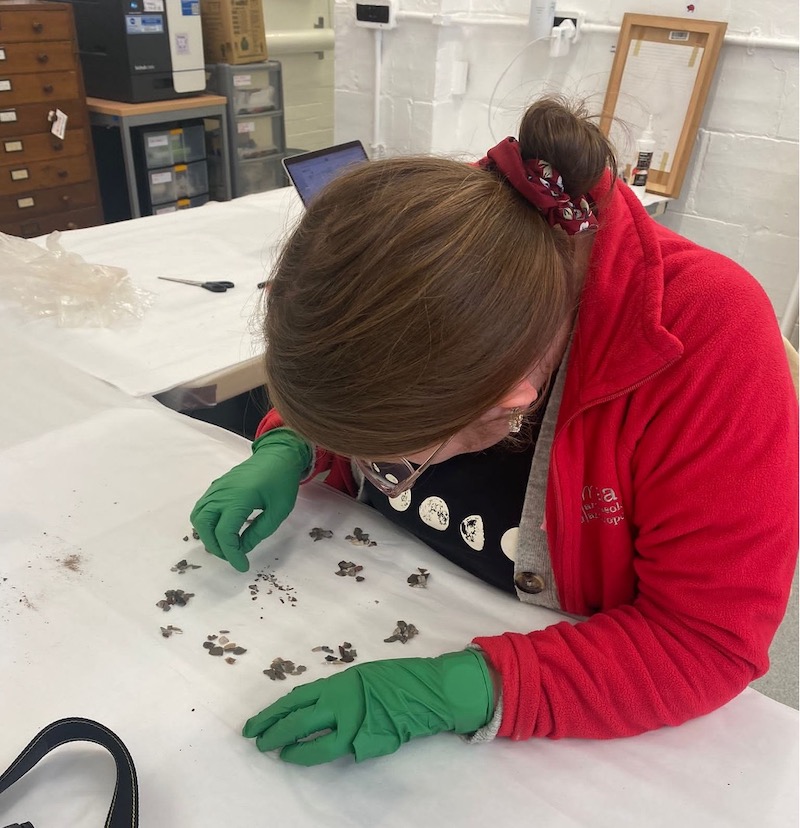
For a period of time in the Museum’s history, ‘0’ was used as a shorthand for ‘uncountable’ or ‘more than 12’. This poses many different problems, including working out how much stuff the Museum actually cares for. To treat individual pot sherds (fragments) as independent objects would increase the total holding of the museum in numerical terms many times over, and probably take the current team of collections assistants working to document and pack everything within five years, the rest of their lives. It would probably break the database too.
We needed a new plan.
Records reading ‘A number of sherds from somewhere on such-and-such a site’ aren’t of much use to anyone. But we also understood that 700 records reading ‘Body sherd from a vessel of Nene Valley ware’ were unlikely to be much more use, and the process of creating them might mean that nothing else in the stores could be prepared for transport before the end of the project.
We decided on a compromise; records would describe the main pottery types grouped within them, a representative sample would be photographed, and we would count every sherd and record that number as the number of objects. What was originally one object, became several thousand. And it took weeks. In addition, what we thought was an isolated incident turned out to be fairly normal for Roman collections, including bulk material such as building waste, mortar and large soil samples. To preserve our sanity, we tackled small groups of Roman sites a few weeks at a time between other, less demanding collections. When it was all over, we ate cake and wiped the sweat from our brows. And then we moved on to the Stone Age collections from Lesotho…
Suddenly, the Romans looked minimalist.
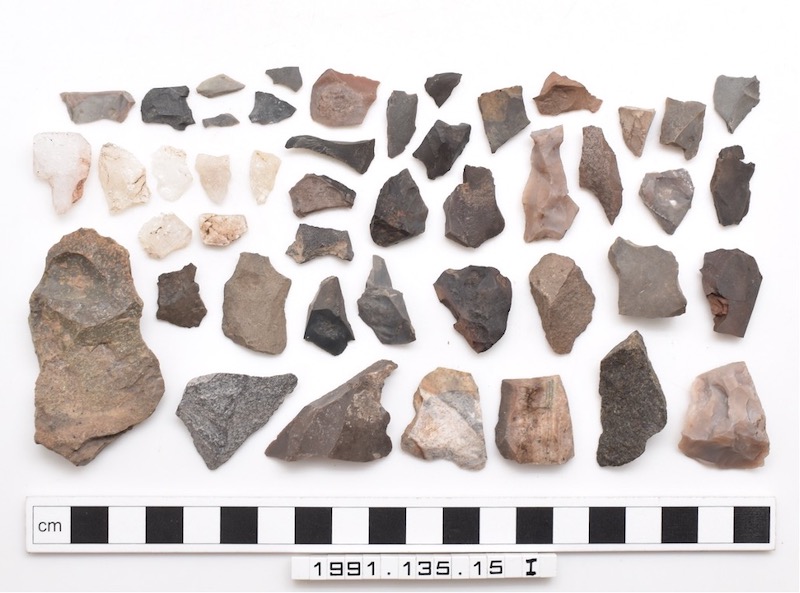
Here’s what we knew: originally, one record on the database existed covering the excavation of a large site, over multiple phases, consisting of multiple archaeological contexts and, seemingly, every single thing that was found during the entire excavation. This one record consisted of hundreds of bags of material spread over more than forty boxes. Previously, issues like this had been half-solved by assigning each box a record, irrespective of its contents. The boxes from Lesotho (of a size usually weighing around 10kg) each weighed more than 30kg and were filled to the brim with the tiniest worked and unworked lithics. We began using the same system that we developed for the Romans, but the volumes we were dealing with were just unmanageable. The team were processing tens of thousands of objects a day. The method needed to be adapted again. Not just because, at the outset of the stores move project, it was believed that the MAA had about 250,000 objects in its off-site stores and it was beginning to look like there were at least that many un-counted Lesotho lithics. The museum was set to double in size! We decided to split each box into manageable bags, count each group as one object and include the number of individual lithics in the description. To save time, we started photographing ten examples per group- sometimes representing only a few percent of the total number. To date, we’ve created 1,405 records, many of them describing several hundred individual lithics.
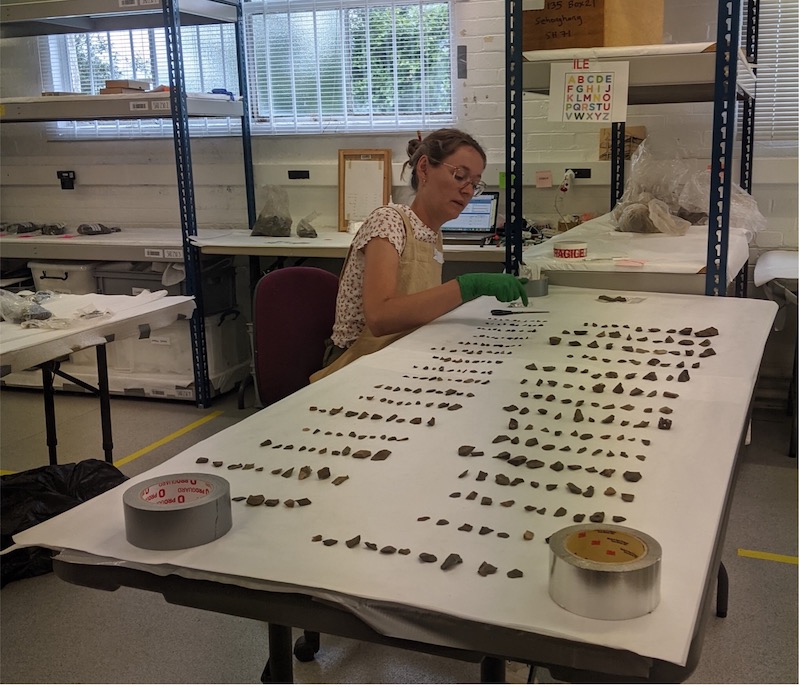
You might be wondering why we weren’t prepared for a collection of this nature, and the real answer is that this isn’t the kind of collection usually stored by a museum like ours. When excavations take place, they (sometimes) generate a large number of finds. Once recorded and interpreted, these finds become a bulk archive so that people not involved in the original interpretation can research the material too. These archives are really important as technologies and methodologies evolve over time, allowing us to extract more information from material than we were previously able to. Victorian archaeologists weren’t usually very keen to keep human skeletal remains as the information that could be gleaned from them was quite limited. We are now in the position to regret those decisions in the cases where newer technologies would enable us to gather huge amounts of data about how the people of the past lived and died.
Over the centuries, the archaeological pendulum has swung variously between keeping absolutely everything discovered during an excavation (including some quite modern insect remains and animal dung from Lesotho) to keeping very little and potentially discarding valuable evidence. Most excavations will try to find the best possible compromise, recording everything in as much detail as possible but only keeping what will be likely to be useful in the future. This material is then deposited with a bulk archive; these are normally associated with the county council but some museums also operate as bulk archives. Bulk archives have strict rules about what they will and won’t accept and will ask for the material to be packed into boxes that fit with their storage systems prior to deposit. Most will charge a fee per box of deposited material, though the cost of storing the material will always eventually be more than the fee charged. The bulk archives that have found their way into our collections each have their own reasons for ending up here. We’re hopeful that the systems we have developed will enable them to be useful for years to come and help us cope with whatever’s next.
If you’d like to gaze upon the full extent of these collections, you can visit them online through our collections portal: https://collections.maa.cam.ac.uk/objects/
Try searching ‘Sehonghong’ or ‘Roman sherd’ (remember to tick ‘image available’ on the right of the screen).
Or maybe you’d like to see their more complete cousins on display in our permanent galleries.





